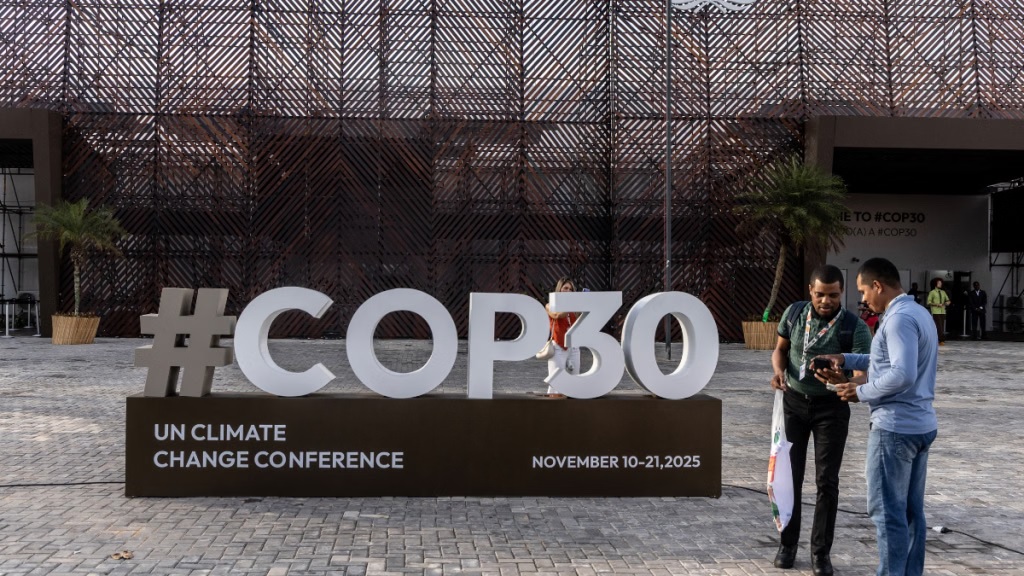1. Discuss the challenges and opportunities for South Asia in taking a leadership role in climate negotiations, particularly in areas of climate finance, adaptation, and technology transfer.
| Syllabus: General Studies – III: Climate Change: Global and national initiatives; mitigation and adaptation strategies; sustainable development goals (SDGs). |
IN NEWS: What South Asia wants from COP30
There is a need for mutual clarity, mutual cooperation and mutual implementation on climate action, as consultations across South Asia — a region that is bearing the brunt of the climate crisis — show
South Asia, home to nearly two billion people, is one of the regions most vulnerable to climate change, experiencing heatwaves, floods, landslides, glacial lake outbursts, and coastal threats. Despite this, the region is emerging as a potential leader in global climate negotiations, particularly in climate finance, adaptation, and technology transfer.
Challenges:
- Vulnerability and Exposure: Countries like India, Bangladesh, Nepal, Maldives, and Sri Lanka face diverse climate risks, limiting their capacity to act aggressively on mitigation.
- Implementation Gaps: Only 65 countries have submitted enhanced NDCs and only ~ 5% of climate initiatives since 2015 have met stated targets. Weak governance and monitoring structures reduce credibility in negotiations.
- Financial Constraints: South Asian countries are often dependent on external climate finance, which is unpredictable, inadequate, and sometimes debt-inducing.
- Technology Access: Exclusion from international flows of climate technology limits regional ability to deploy innovative solutions at scale.
- Geopolitical Limitations: Global power imbalances and withdrawal of major players like the US from the Paris Agreement undermine multilateral cooperation.
Opportunities:
- Regional Cooperation: Platforms such as BIMSTEC, BRICS, CDRI, and G-20 allow knowledge-sharing, pooling of resources, and joint advocacy.
- Climate Finance Innovation: Creation of a South Asian resilience finance facility and access to multilateral funds like the Green Climate Fund can mobilize sustainable finance.
- Adaptation Leadership: South Asia can lead in climate-resilient agriculture, coastal management, disaster preparedness, and renewable energy deployment.
- Non-State Actors & Technology: Engaging the private sector, youth, civil society, and sub-national governments can accelerate technology transfer, local innovation, and implementation.
South Asia’s climate leadership is driven by necessity, experience, and moral responsibility. By addressing financial and technological gaps, strengthening governance, and leveraging regional cooperation, the region can play a pivotal role in global climate negotiations, ensuring both mitigation and adaptation goals are met.
| PYQ REFERENCE (2021) Q. India has committed to achieve 50% of its energy capacity from non-fossil fuel sources by 2030. Discuss its significance in the context of India’s climate action. |
2. “Anti-conversion laws in India aim to prevent forced religious conversions, but their implementation raises concerns about misuse and constitutional freedoms.” Critically evaluate the challenges associated with these laws. Suggest measures to balance protection against coercion with the fundamental rights of individuals.
| Syllabus: General Studies – II: Government policies and interventions for development in various sectors and issues arising out of their design and implementation. |
IN NEWS: Basic structure touchstone for anti-conversion laws
Anti-conversion laws in India are enacted to prevent forceful or fraudulent religious conversions. While their stated purpose is to protect individuals from coercion, empirical evidence and judicial observations indicate that their implementation often undermines constitutional freedoms and raises concerns about misuse.
Challenges Associated with Anti-Conversion Laws
(a) Legal Challenges:
- Constitutional conflicts: Potential violation of Articles 14, 21, and 25, which guarantee equality, personal liberty, and freedom of religion.
- Supreme Court stance: In Rev. Stanislaus vs. Madhya Pradesh (1977), the Court clarified that propagation of religion does not include conversion. Current cases like Citizenship for Justice and Peace vs. State of UP examine misuse and basic structure violations (Secularism).
- Vague provisions: Terms like “lure” are undefined; reversal of burden of proof imposes “guilty until proven innocent”, contrary to legal norms.
(b) Governance and Social Challenges:
- Arrest–conviction gap: In UP (2021–2024), 1,682 arrests but fewer than 12 convictions → indicates harassment rather than justice.
- Privacy intrusion: Mandatory notification to District Magistrates 60 days prior to conversion violates Right to Privacy.
- Targeting vulnerable groups: Interfaith couples and minorities face scrutiny and social hostility.
- Encouragement of vigilantism: Any individual can lodge complaints, potentially misused by fringe groups.
Way Forward / Recommendations
- Clarity in law: Define coercion, inducement, and consent explicitly.
- Judicial safeguards: Ensure burden of proof rests with the accuser, not the accused.
- Balanced enforcement: Limit third-party complaints; protect genuine religious exercise.
- Public awareness: Promote education on constitutional freedoms and secularism.
- Monitoring mechanism: Periodic review to assess misuse and effectiveness.
Anti-conversion laws must strike a balance between preventing coercion and safeguarding fundamental rights. Clear legal frameworks, judicial oversight, and respect for individual liberties are crucial to uphold India’s constitutional values and social harmony.
| PYQ REFERENCE (2022) Q. Are tolerance, assimilation and pluralism the key elements in the making of an Indian form of secularism? Justify your answer. |

